Here’s another chart update from my Spotlight report on The Market Forces Behind North Carolina’s Falling Emissions. It shows the rise of natural gas (green) as a source for electricity generation in North Carolina, mostly over the last 6–8 years as low-priced natural gas entered the picture.
This was a change not expected by government planners. It came about from technological change in recovering oil and gas resources.
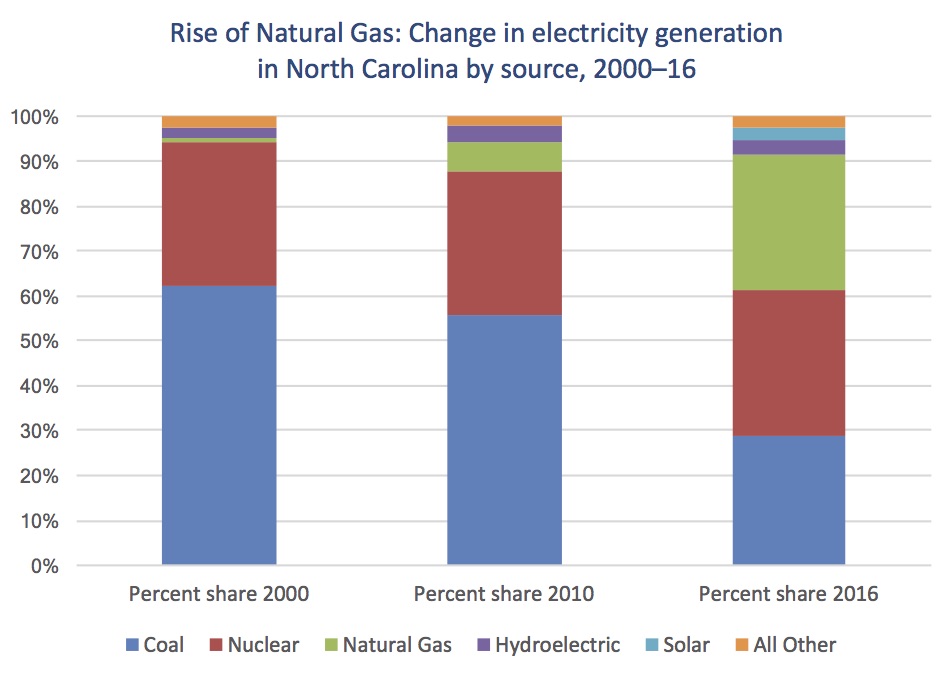
Source: U.S. Energy Information Administration, “North Carolina Electricity Profile 2016”
From 2000 to 2016, the share of North Carolina’s electricity generation from coal fell by over half, from 62.1 percent to 28.6 percent. Generation from nuclear rose slightly, from 32.0 to 32.7 percent.
Generation from hydroelectric rose slightly, from 2.6 to 3.4 percent. Generation from solar rose slightly, mostly after 2014, from 0 to 2.6. Generation from all other sources rose slightly, from 2.4 to 2.7 percent (these include wood, petroleum, and biomass).
Generation from natural gas rose dramatically, from 0.9 percent to 30.0 percent.
Here are energy-based emissions in North Carolina over the same timeframe:
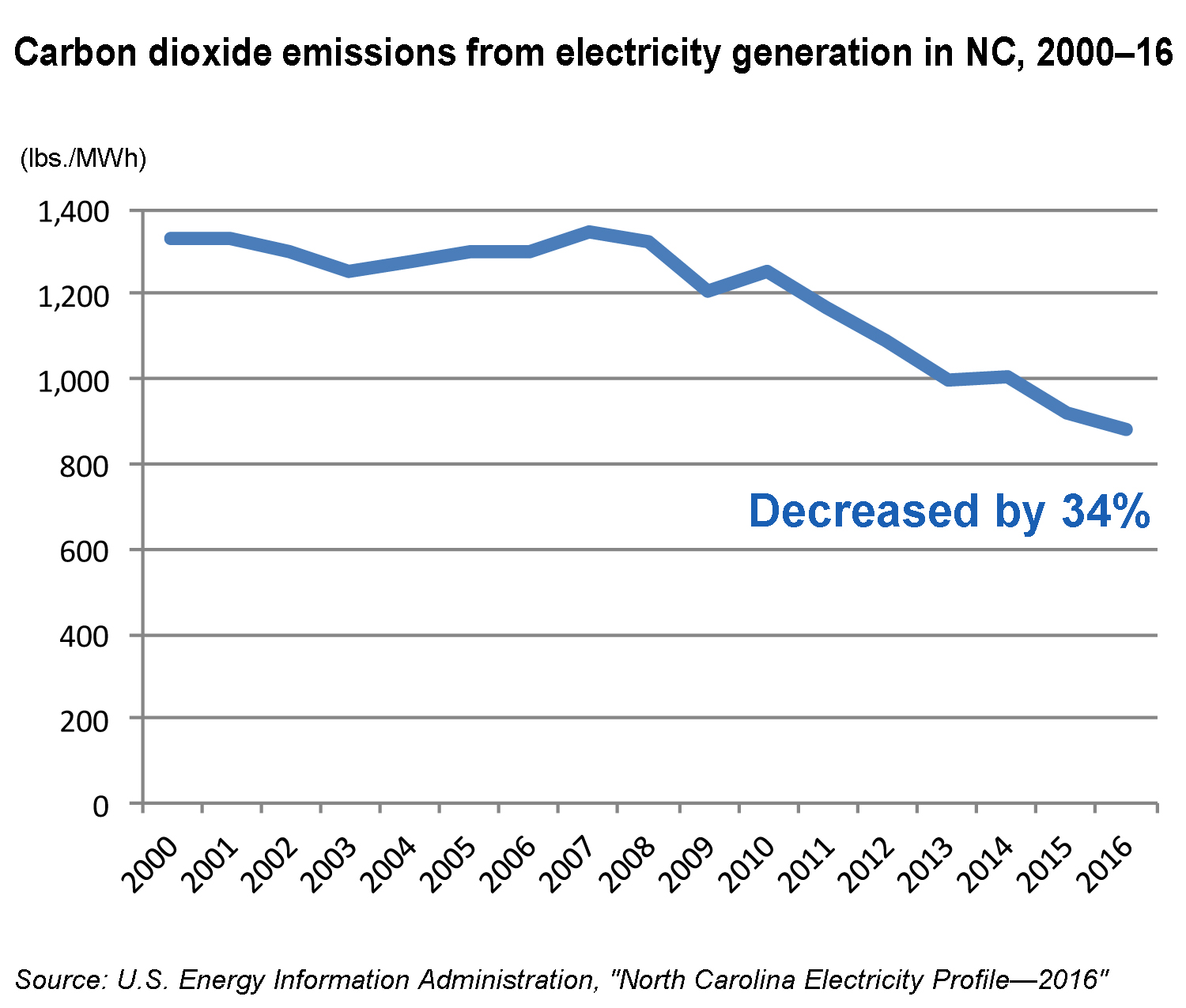
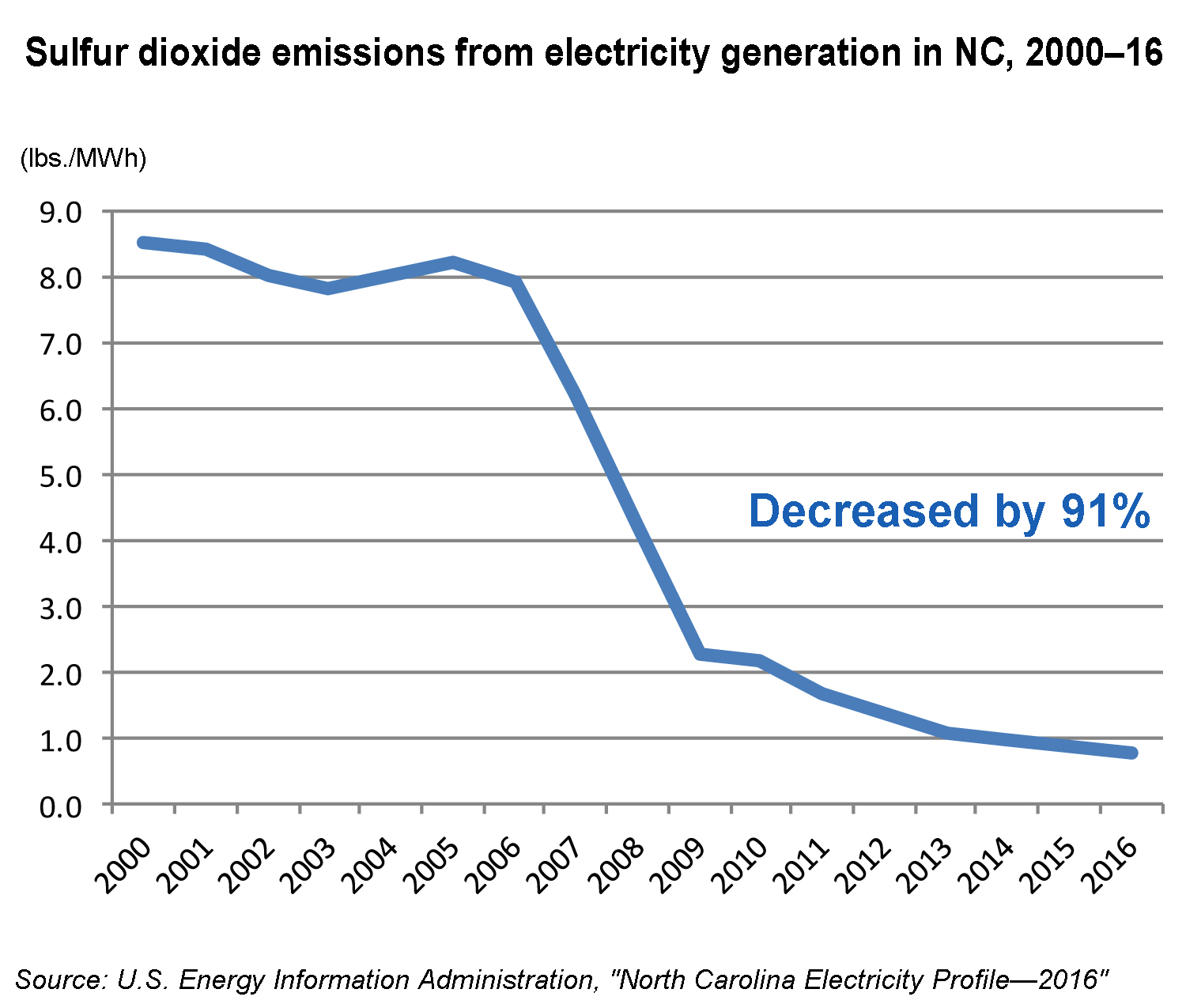
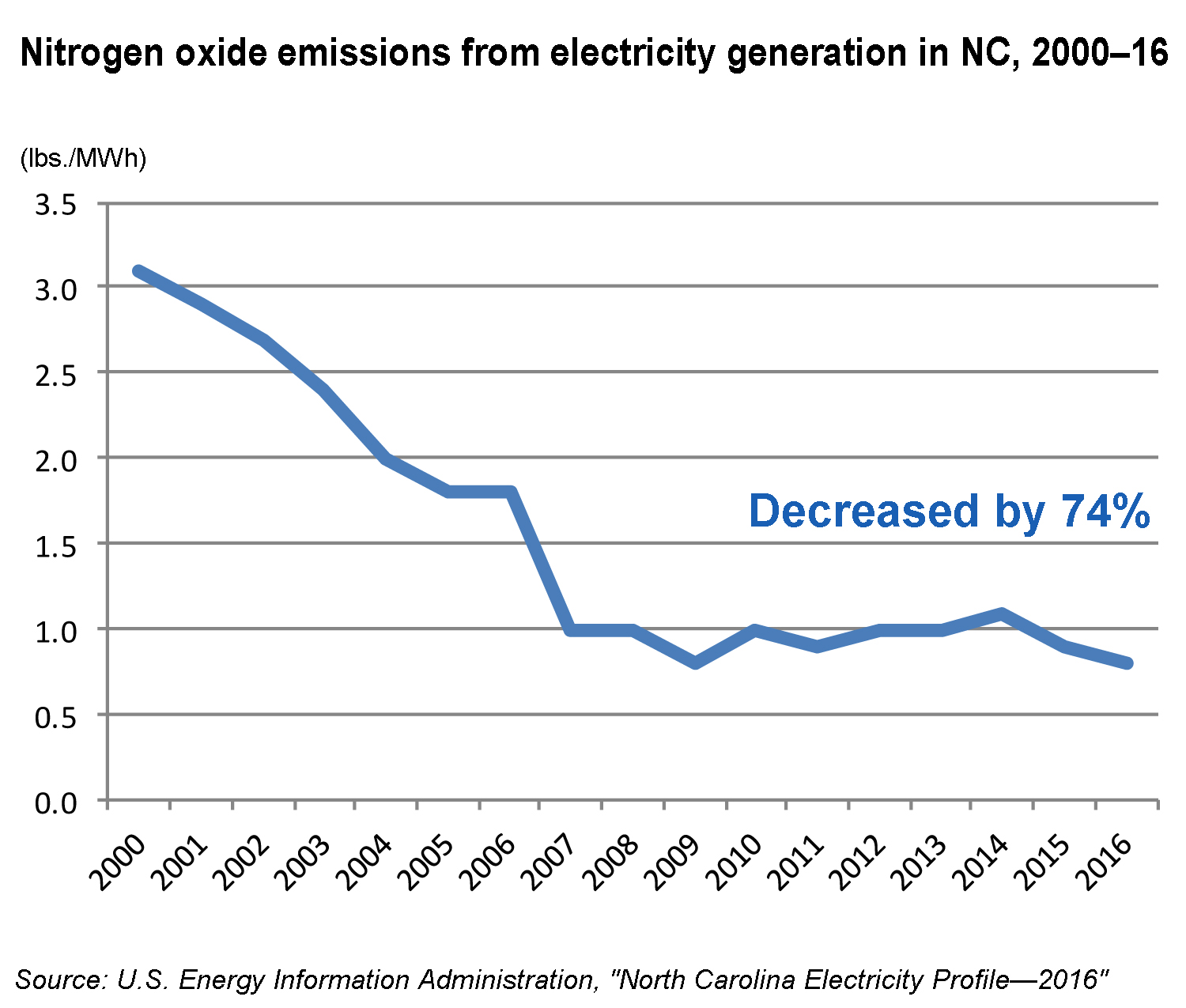
Here’s one more chart. This one’s more conceptual but it helps describe what’s been going on. As I explained in my report,
Economists use something called the Environmental Kuznets Curve to describe this relationship. Initially developing economies necessarily produce greater pollution than the pre-existing state of nature. When societal wealth, life expectancies, and productivity reach a certain point, however, people begin valuing cleaner environments, while technological advances and post-development shifts in industry produce cleaner and more efficient outcomes.
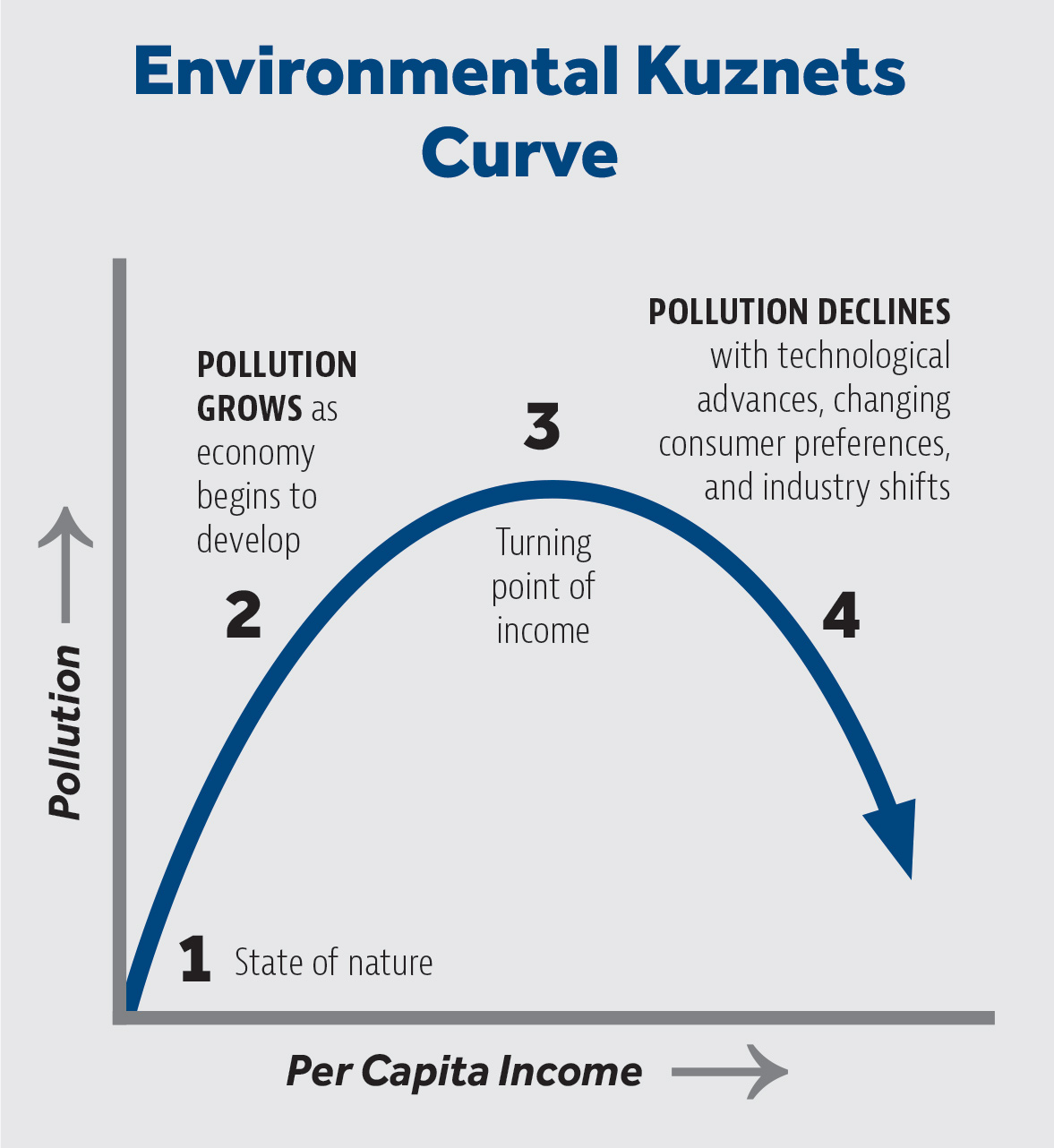
To reiterate: the reasons energy-based emissions have been falling all century in North Carolina and the U.S. are market-oriented, not government-driven.


